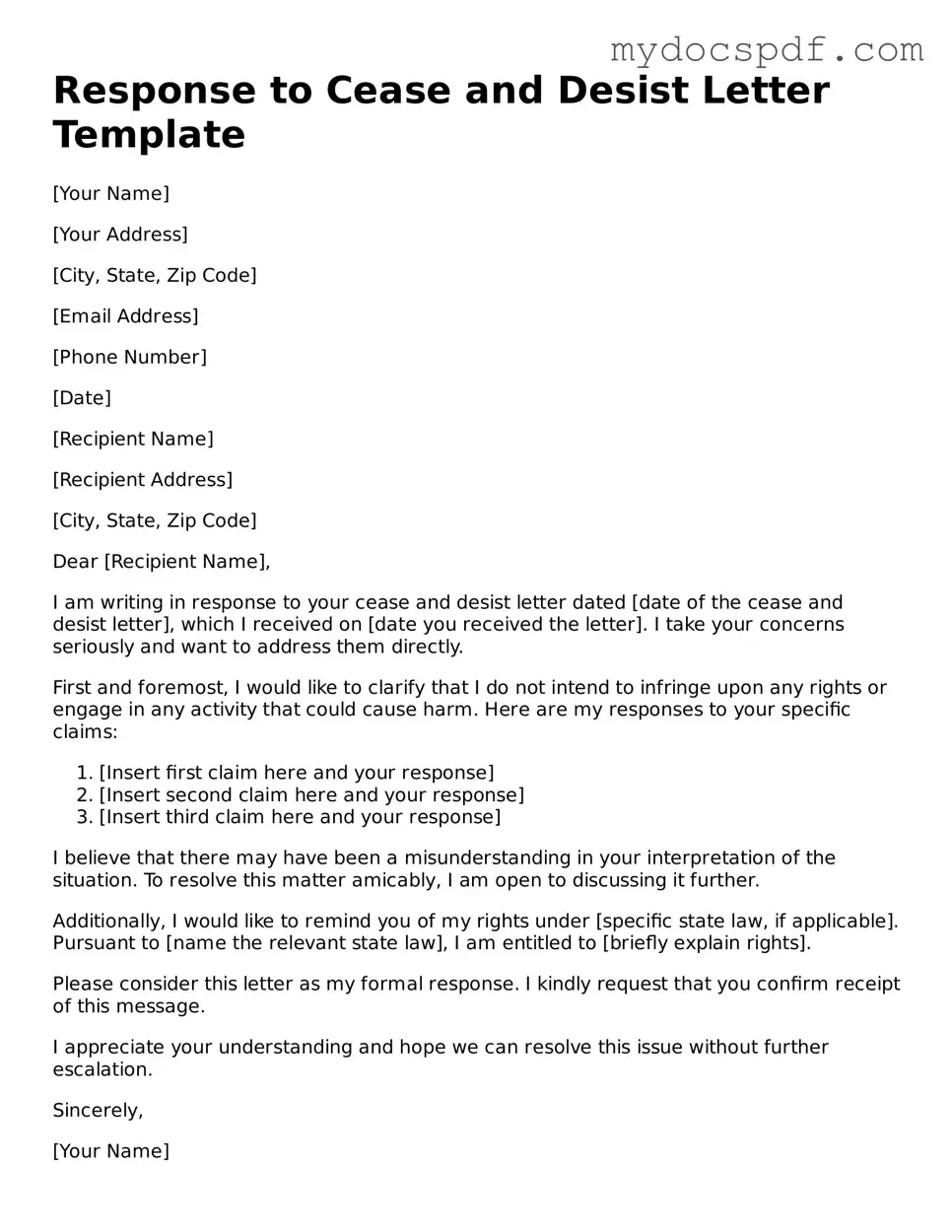Response to Cease and Desist Letter Template
[Your Name]
[Your Address]
[City, State, Zip Code]
[Email Address]
[Phone Number]
[Date]
[Recipient Name]
[Recipient Address]
[City, State, Zip Code]
Dear [Recipient Name],
I am writing in response to your cease and desist letter dated [date of the cease and desist letter], which I received on [date you received the letter]. I take your concerns seriously and want to address them directly.
First and foremost, I would like to clarify that I do not intend to infringe upon any rights or engage in any activity that could cause harm. Here are my responses to your specific claims:
- [Insert first claim here and your response]
- [Insert second claim here and your response]
- [Insert third claim here and your response]
I believe that there may have been a misunderstanding in your interpretation of the situation. To resolve this matter amicably, I am open to discussing it further.
Additionally, I would like to remind you of my rights under [specific state law, if applicable]. Pursuant to [name the relevant state law], I am entitled to [briefly explain rights].
Please consider this letter as my formal response. I kindly request that you confirm receipt of this message.
I appreciate your understanding and hope we can resolve this issue without further escalation.
Sincerely,
[Your Name]
